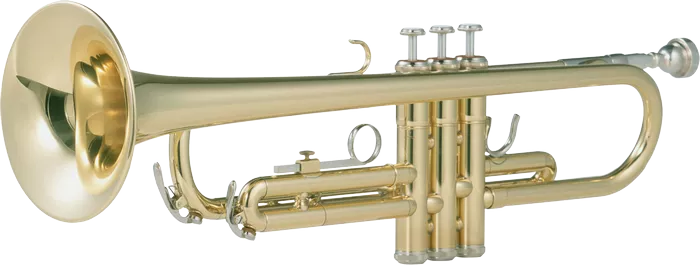The trumpet, a brass instrument with a distinctive and commanding sound, has a rich history that spans centuries and continents. Originating in ancient times, the trumpet has evolved both in design and cultural significance. In this comprehensive exploration, we delve into the origins and journey of the trumpet, tracing its path from early civilizations to its pivotal role in modern music.
Ancient Roots: The Birth of the Trumpet
The roots of the trumpet can be traced back to ancient civilizations, where primitive forms of the instrument were used for various ceremonial and military purposes. In Egypt, as early as 1500 BCE, depictions of trumpet-like instruments adorned the walls of tombs, showcasing their role in religious rituals and processions. Similarly, ancient Greeks and Romans utilized trumpet-like instruments during military campaigns and public events.
Medieval Europe: The Trumpet in Court and Ceremony
The trumpet continued to evolve during the medieval period in Europe. Advancements in metallurgy and instrument design led to the creation of more refined and versatile trumpets. In medieval courts, trumpeters played a crucial role in heralding the arrival of royalty, announcing ceremonies, and participating in festive occasions. The natural trumpet, lacking valves, relied on the skill of the player to produce different pitches through the manipulation of lip tension and airflow.
Renaissance Innovation: The Emergence of Valves
The Renaissance marked a pivotal moment in the trumpet’s history with the introduction of valves, a technological innovation that revolutionized the instrument. Trumpet makers in Germany and the Netherlands began adding finger-operated valves to the natural trumpet, allowing players to change the pitch more easily. This breakthrough expanded the trumpet’s range and versatility, making it a more expressive instrument suitable for a broader range of musical genres.
Baroque Brilliance: The Golden Age of the Trumpet
The Baroque era witnessed the golden age of the trumpet, with composers like Bach, Handel, and Purcell incorporating the instrument prominently in their works. The addition of more valves further enhanced the trumpet’s capabilities, enabling it to play intricate melodies and harmonies. Trumpeters became esteemed members of royal courts and orchestras, contributing to the grandeur and opulence of Baroque music.
19th Century and Military Bugle: From Battlefield to Brass Bands
In the 19th century, the trumpet continued to evolve, finding a prominent place on the battlefield as the military bugle. With the advent of piston valves, the instrument became more compact and easier to play. Bugle calls played a crucial role in military communication, signaling commands to troops. Simultaneously, brass bands emerged as popular musical ensembles, featuring trumpets prominently and contributing to the democratization of music in communities.
Jazz Revolution: Trumpet as the Voice of Jazz
The 20th century brought about a revolution in music, with the trumpet at the forefront of innovation, particularly in the realm of jazz. Legendary trumpeters like Louis Armstrong, Miles Davis, and Dizzy Gillespie not only defined the sound of jazz but also expanded the trumpet’s technical boundaries. The use of improvisation, syncopation, and extended techniques propelled the trumpet into new sonic territories, making it a symbol of innovation and self-expression.
Global Influences: Trumpet in Various Cultures
While the trumpet has deep roots in Western classical and jazz traditions, it has also found a place in diverse musical cultures worldwide. In Latin America, the trumpet plays a central role in mariachi and salsa music, adding a vibrant and energetic element to the sound. In African and Middle Eastern music, trumpets and brass instruments contribute to the rich tapestry of traditional and contemporary genres, showcasing the instrument’s adaptability across cultures.
See Also: [Revealed!] The Factors Behind the High Cost of Trumpets
Conclusion: A Timeless Icon in Musical Evolution
The trumpet’s journey through time and across cultures reflects its versatility and enduring appeal. From ancient civilizations to modern genres, the trumpet has adapted and evolved, becoming a symbol of cultural expression and musical innovation. Whether heralding the arrival of royalty, commanding attention on the jazz stage, or adding a festive touch to global celebrations, the trumpet continues to resonate as a timeless icon in the ever-evolving landscape of music.

